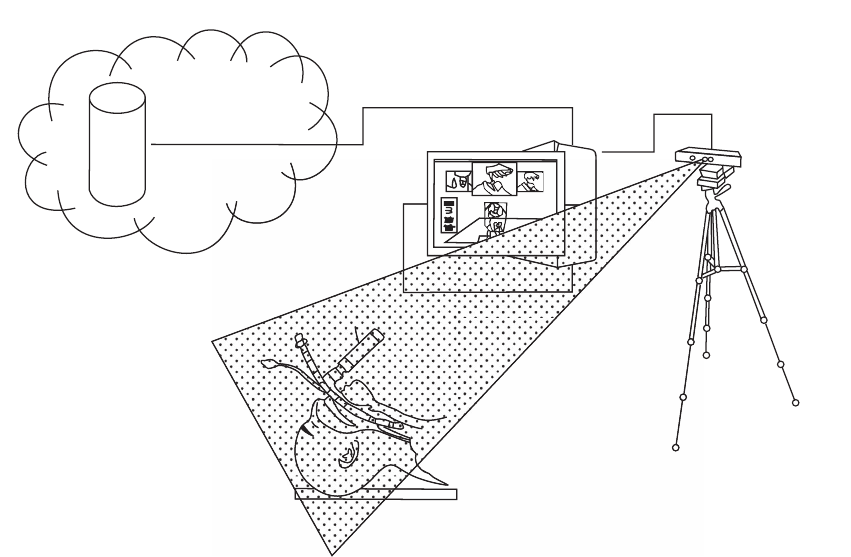AIMS: Applying Game Technology to Advance Medical Education
By Andreas Tolk, Geoffrey T. Miller, Andrew E. Cross, Justin Maestri, and Benjamin Cawrse
NOTE: This is an overview of the entire article, which appeared in the November/December 2013 issue of the Computing in Science & Engineering magazine.
Click here to read the entire article.
This article describes how AIMS researchers have adapted the Kinect Software Development Kit (SDK), specifically its camera, to observe and record experts demonstrating clinical procedural skills, creating a baseline for mastery-level performance. The camera then observes students practicing the skill and compares their performance against the mastery-level baseline and provides feedback when the student needs help or makes a procedural misstep.

Schematic representation of the Automated Intelligent Mentoring System (AIMS). The Kinect camera observes the procedure and feeds the data to the computer, which then compares the observation with the mastery performance model and provides feedback.
Researchers provided four modules of AIMS applications that were selected based on the community’s needs: intubation, vertical lift, lateral transfer, and cardiopulmonary resuscitation (CPR).
Although, in its current form, AIMS is an advanced prototype that is still undergoing testing and validation before it’s ready for commercial distribution, some applications such as CPR have already hit the market.
Future applications for additional modules are being explored. The objective is to create a realistic and emergent environment for the learner where various components are no longer standalone applications but integrated by an interoperability framework that explores all elements.
The researchers stressed that AIMS hasn’t been developed to replace clinical experts, but to relieve them from the burdens associated with medical skill acquisition and assessment.
ABOUT THE AUTHORS
Andreas Tolk (andreas.tolk@simisinc.com) is the chief scientist at SimIS and adjunct professor at Old Dominion University. His research interests include modeling, simulation, and visualization engineering. Tolk has a PhD in computer science from the Univer- sity of the Federal Armed Forces, Munich. He’s a senior member of IEEE.
Geoffrey Miller (millergt@evms.edu) is an assistant professor at the School of Health Sciences, and the director of simulation, research, and technology at Eastern Virginia Medical School (EVMS). His research interests include medical education with an emphasis on immersive virtual environments, serious gaming, and innovative educational technology development.
Andrew Cross (crossae@evms.edu) is the assistant director of simulation technology at Eastern Virginia Medical School (EVMS). His research interests include simulation technology and healthcare education. Cross has a BS in engineering science from Vanderbilt University.
Justin Maestri (justin.maestri@simisinc.com) is the product and marketing manager at SimIS. Maestri is an expert in computer visualization, animated graphics, and digital marketing.
Benjamin Cawrse (benjamin.cawrse@simisinc.com) is a senior software engineer at SimIS. Cawrse has an MS in computer science from Old Dominion University.






